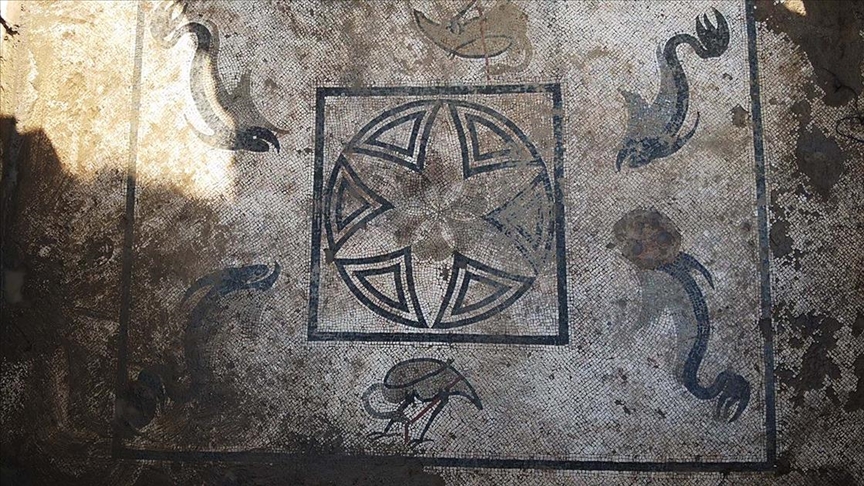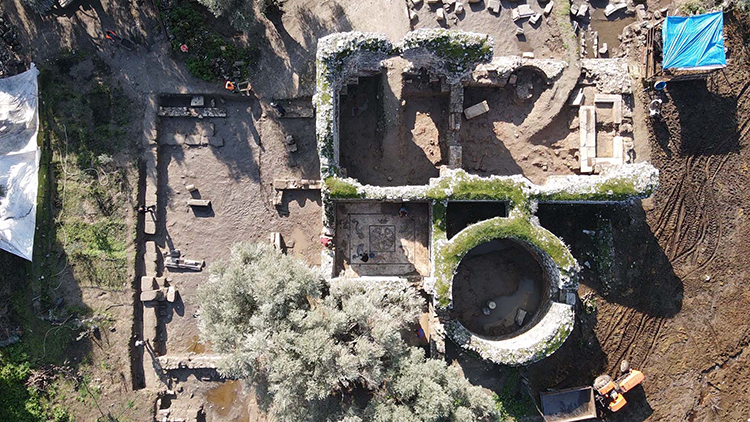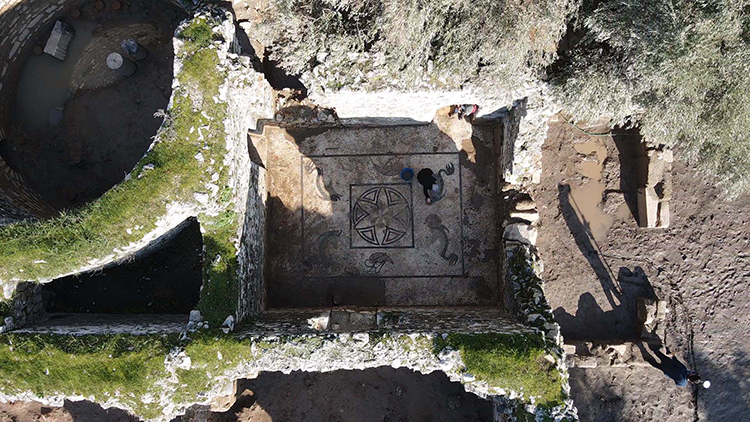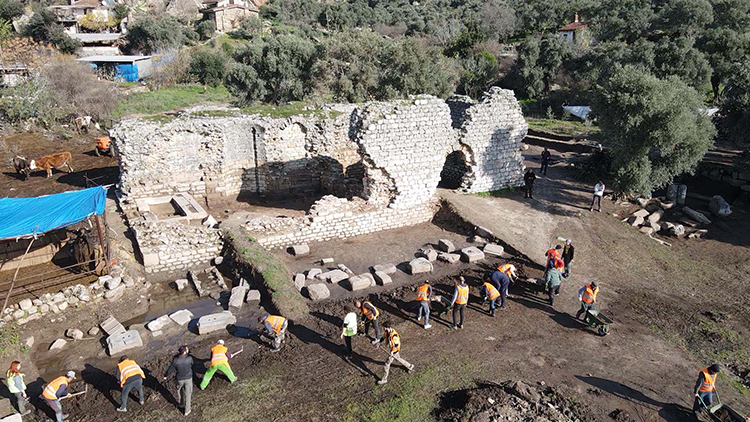
Archaeologists have made an extraordinary discovery in the ancient city of Heraclea in Mugla's Milas district.
The Roman-era bath floor revealed large mosaics with detailed depictions of crocodiles, eels, dolphins and flamingos in a Roman bath.
Professor Zeliha Gider Buyukozer, head of the Latmos and Heraclea excavations and a faculty member at Selcuk University's Department of Archaeology, shared details about the excavation.
"The Roman-era bath is the best-preserved structure in the area. We excavated over 2 meters of fill and opened the spaces of the bath, identifying their functions and stages of use. This has provided critical archaeological data," she explained.

One of the most fascinating discoveries was a mosaic in the cold room of the Roman bath, where six crocodiles were depicted facing each other. Buyukozer emphasized the precision of the artwork: "The mosaic has attracted considerable interest. Some might think crocodiles once lived in this region, but it’s not a suitable habitat for them. The artisan who created this mosaic must have seen a crocodile in great detail. This suggests that the artisan was a traveling craftsman who likely worked in regions where crocodiles were present."

Another mosaic in the tepidarium featured dolphins, flamingos and red eels. Flamingos were shown holding eels in their beaks, adding a unique element to the artwork.
Buyukozer explained the connection to the local environment: "The flamingos are birds still found in this region today. The artist depicted animals he observed in this geography, making the mosaic a reflection of the local environment."

The Roman bath was used for various purposes by local villagers over the years. Buyukozer noted: "At one point, the bath was used as a barn. The current owners told us they had tied their animals here. The area next to the bath is still being used as a barn."
Turcen Aydin, a 68-year-old resident of Kapikiri Mahallesi, described his reaction to the discovery.
I tied my animals here for years to protect them from the rain and cold. When I saw the mosaics and figures uncovered during the excavations, I was shocked. I never imagined something like this existed here. It turns out we have been living on top of history without knowing it.

The Roman-era mosaics have captured the attention of locals and visitors, with many coming to see the artworks and learn about the ancient bath.
The rocky foundation of the bath has helped preserve the mosaics for centuries, allowing them to remain in excellent condition.
Excavations at the site continue to uncover new details about the history and culture of the ancient city of Heraclea Latmos, offering a deeper understanding of the region’s past.